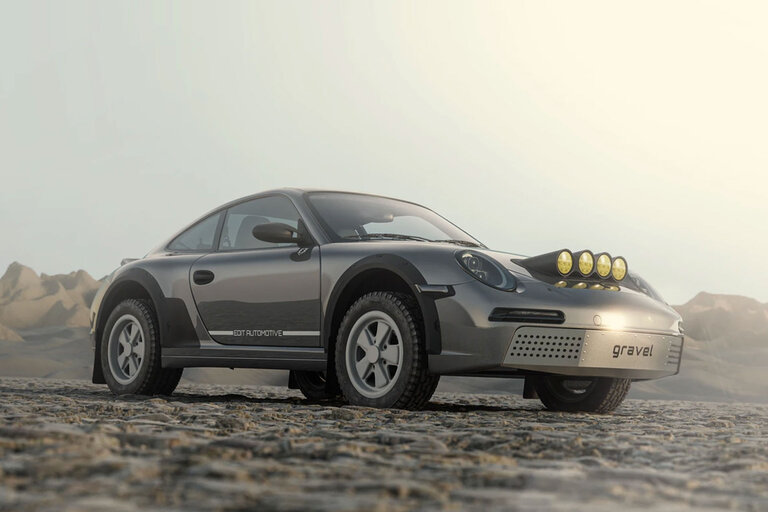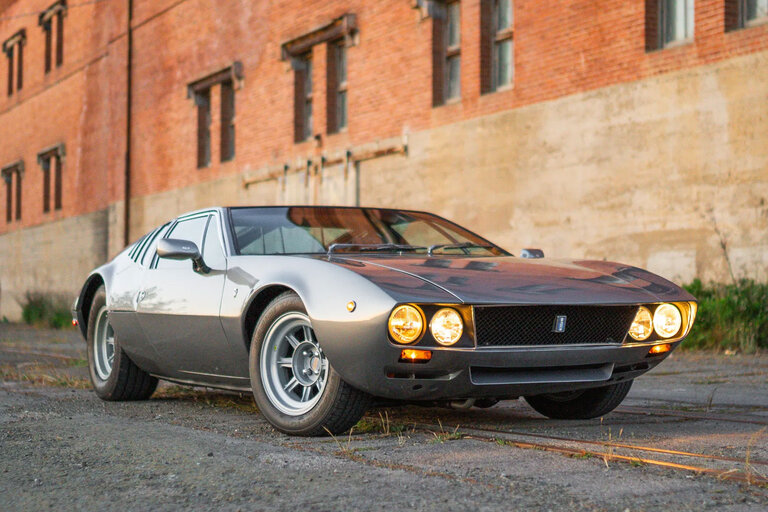
You may have read or heard about wheel bearings, and maybe you’re wondering about wheel bearing replacement cost. But what exactly are they? Wheel bearing is a set of steel balls or rollers wrapped in a metal ring that sits inside a hollow piece of metal at the centre of your wheel hub. The wheel bearing rides on your car’s axle shaft, helping to reduce friction as the wheel spins allowing for a smooth ride.
There are several types of wheel bearings that are used in cars which we will discuss further, but every car has a wheel bearing on each of their wheels and it is essential for your car to run smoothly.
Since they support your car’s weight while you’re driving, wheel bearings are prone to getting abuse. This is especially true if you drive on rough and bumpy roads with lots of potholes. Other driving conditions such as excessive water and mud can also cause the wheel bearing to excessively erode overtime.
Just like almost any other car part, wheel bearings will wear out over time. On top of that, a major accident can also cause significant damage to the wheel bearings. We’ll be discussing further on the types of wheel bearings, the signs you should look out for, and of course, how much you should expect to pay for the replacement cost.
Types Of Wheel Bearings
Different manufacturers will use different types of wheel bearings for their own reasons, some are easier to manufacture, other types will allow for more performance in the vehicle. Here are some commonly used types of wheel bearings:
1. Ball Bearings
This is one of the most commonly used type of bearings as they are very versatile and simple. They can cope with radial loads (the car load that is on the wheel) as well as the thrust load (cornering pressure) fairly well. You’ll find this in most cars, bikes, and even roller skate wheels.
2. Precision Ball bearings
These are similar to ball bearings. However, their rotation speed is higher compared to standard ball bearings and they reduce friction which then reduces the amount of heat generated, allowing them to cope with even larger amounts of load and pressure.
These benefits allow for more performance to be squeezed out of the car. Since they can cope with larger amounts of pressure, they can be used for more extreme and demanding purposes. You’ll typically find this type of bearings in race cars, performance or exotic cars, and even airplanes.
3. Roller Bearings
You probably won’t find this type of bearings in a motor vehicle, as they don’t handle cornering pressure very well. They can only handle loads in low to medium speeds. You’ll typically find this mostly in shopping carts or hand trucks.
4. Tapered Roller Bearings
Tapered roller bearings are also commonly used in cars and trucks. Instead of a ball they will have cone-shaped roller bearings which helps with cornering pressure. For this reason, the tapered roller bearings are used more commonly compared to standard roller bearings.
Signs Of Worn Out Wheel Bearings
If you’d like to physically check the ball bearings on your car, you’d have to take apart your suspension assembly. The video below shows how you can take apart and check on your wheel bearings:
Understandably, not everyone will have skill or time necessary to physically check the condition of their car’s wheel bearing. Thankfully, you can look for other telltale signs to see if your car has a worn or damaged wheel bearing. Here are the symptoms you should look out for:
1. Uneven Tire Wear
A worn out or bad wheel bearing can cause your wheel to be loose or cause more vibration to happen during driving. This, in turn, will result in uneven tire wear, as each wheels are going through different levels of vibration. Loose wheels also mean they sit differently compared to the others, causing further uneven tire wear.
Make sure to check each tires if you’re doing tire rotations or changing your tires if you suspect you have a bad wheel bearing.
Keep in mind that unbalanced tires can cause uneven tires as well. A bad wheel alignment can also cause uneven tire wear in your car. So, don’t immediately assume it’s because of bad wheel bearing, make sure the other symptoms match up as well.
2. Listen For Humming Or Grinding Noises
Another common symptom of bad wheel bearings are loud noises from the tires. Bad wheel bearings lose lubricity resulting in increased friction, which in turn cause the noises. It usually sounds like two pieces of metal rubbing against each other, often producing a humming noise as you drive.
Bad wheel bearings lose lubricity resulting in increased friction, which in turn cause the noises.
If the sound gets louder the faster you drive, then chances are it’s the wheel bearing that’s making the noise. If you’re hearing unusual noises from your car but not entirely sure what it is, you can watch the video below as a reference:
If you hear a loud, unusual, and persistent noise as you drive along it’s best to get it checked. Regardless of the cause, cars are not really supposed to make loud noises as they drive. Except of course for the engine, wind, and tire noise.
3. Steering Wheel Vibration
If the wheel bearings are in a really bad state, it’s likely your steering wheel will start to vibrate as you drive along. It’s usually present at lower speeds, and gets worse as you drive along just like the grinding noises.
Keep in mind that steering wheel vibration might also be caused by unbalanced tires. However, vibrations caused by unbalanced tires normally occurs only at high speeds, usually above 60mph or highway speeds. While steering wheel vibration caused by a bad bearing can occur at speeds below that.
If you are experiencing steering wheel vibration you might want to get your tires balanced to see if the problem persists. If it does, then it’s possible the vibration is caused by bad wheel bearings. That being said, if you’ve had your tires balanced recently then there’s no need to do so. It usually takes about a year or two for steering wheel vibration to reappear after a tire balancing.
Another symptom that you can tell from the steering wheel is the car feeling loose. This one’s slightly more difficult to convey and unless you’re a keen driver you might not notice it at all. But a car with a bad wheel bearing tends to feel loose, meaning the handling feels less precise. This is due to excess wobble in the wheels caused by bad bearings, which segues us to the next symptom:
4. Excess Wobble Or Play In Wheels
To diagnose this symptom, you will need to lift your car and have all four wheels up on jack stands. When lifted, grab each wheel and try rocking it backwards and forwards. If there’s wobble or excess “play” in the wheels, then it’s likely you have a bad wheel bearing.
Normally a car’s wheels shouldn’t wobble when being rocked, they should stay firmly in place. But if it does then you’ll need to get it checked. In any case, having excess wobble in your wheels can be very dangerous when driving.
On top of these symptoms, if you’re driving a newer car be on the lookout for the ABS light on your dashboard. The ABS light can mean a variety of things, usually brake-related. However, manufacturers often also use the ABS light to signify a problem with the wheel bearing as well.
If you notice those symptoms and the ABS light is on, you might want to go to a repair shop. It would be wise to diagnose the problem and fix it as soon as possible.
Why You Should Change Your Worn Out Wheel Bearings
We’re all a little guilty of putting off repairs on our cars sometimes. Even us car enthusiasts have done it from time to time. Whether it’s because of financial reasons, lack of time to get around to it, or just borderline procrastination. We’re not proud of it, but we’ve all delayed repairs on our cars for some reason.

However, as mentioned previously, wheel bearings are essential in providing a smooth ride while you drive. It is also responsible for your car’s load and weight as you drive along. For these reasons, it’s important to make sure they are always in good condition.
Of course, you can technically still drive your car with a bad wheel bearing. But the longer you wait on replacing it, the more damage it can cause to other parts of your car. Especially to the wheel and suspension assembly, which will cost you more money in the long run.
Bad wheel bearings can also make the car less controllable as you drive along. It affects the car’s handling significantly and putting you, your passengers, and other drivers around you at considerable risk. It’s best to have the wheel bearings replaced as soon as you confirm that it’s worn out or damaged.
It’s rare for the wheel bearing to experience immediate complete failure, unless the car has been in an accident. But if you feel that there’s an issue with your wheel bearings, it’s recommended that you have it checked immediately. Visit your trusted repair shop to see how much damage there is on the wheel bearings. You can also ask them to assess how far is it from completely failing.
As the saying goes, better safe than sorry.
Common Types Of Wheel Bearing Assembly
Wheel bearing replacement cost can vary depending on the type of car and the wheel bearing assembly. To help you understand how the assembly affects the wheel bearing replacement cost, here are the common types of wheel bearing and hub assembly and how they affect replacement cost:
Serviceable Hub Assembly
This is the simplest and easiest type of assembly to replace, as the wheel bearing is separated from the rotor or also known as the wheel hub. Replacing the wheel bearing in this assembly is fairly simple. The mechanic simply takes out the old bearing to replace it with a new one. They can do this without having to do much dismantling to the overall suspension assembly, costing you less labor cost.
Non-Serviceable Hub Assembly

Most new cars will have their wheel bearings come pre-packed with your wheel hub. Meaning the bearing sits in the wheel hub as one unit. This will be more costly to replace since you will need to replace the entire hub, not just the bearings.
While not very labor-intensive, it will cost you more money to replace. This is because you need to replace the entire wheel hub, which is slightly more difficult. Spare parts are going to be more expensive as well. The overall cost will of course depend on the type of vehicle that you have.
Non-Serviceable Hub Assembly With Press In Bearing
This assembly will require you to remove the wheel hub and put it in a press in order to remove the bearing. This is slightly more complicated so prepare yourself for a hefty bill. It’s much more labor-intensive to take apart, requiring more effort and tools, which makes wheel bearing replacement cost more expensive.
You’d want to leave your wheel bearing replacement to a mechanic, unless you’re a professional mechanic yourself and have the necessary tools. If you’re not careful, improper installation of the bearings can cause premature wear and damage.
Wheel Bearing Replacement Cost
As previously mentioned, cars come with different types of wheel bearings which means wheel bearing replacement cost varies from one car to another. To determine the actual cost, you’d have to confirm with your local dealership or your’ll go-to local repair shop. However, here are some examples to give you a rough idea on how much it will cost:
Let’s take a 2018 Toyota Camry as the first example. If you were to replace the front wheel bearings and hub assembly the MSRP is at $363. While a rear wheel hub and bearings will set you back $574. Note that this is the OEM price from Toyota and does not include labor cost.
As for the Camry’s compact little brother, the Toyota Corolla, it will cost you $397 for each front wheel bearing and hub assembly, while the rear one costs $298 each.
Note that wheel bearing replacement cost can be higher in a sports car, a truck, or a luxury car. This isn’t always the case but it does happen with certain cars. The price difference can be either because of an overall more complicated assembly, or the manufacturer simply charging a premium for the spare parts.

For example, the list price of a wheel bearing replacement cost for a 2014-2019 Mercedes-Benz S63 AMG with AIRMATIC suspension is a hefty $970. Well above what you pay for a more “regular” car such as the Toyota Camry.
Keep in mind these prices are OEM (Original Equipment Manufacturer) parts and for the entire hub assembly. If your car doesn’t require it to replace the entire hub, i.e. you can replace just the wheel bearings, it will be much cheaper. The 2018 Toyota Corolla for example only costs $64 just for the wheel bearing itself.
Average Wheel Bearing Replacement Cost

On average, a wheel bearing alone will cost you between $60 – $150, and an entire bearing and hub assembly replacement is around $200 – $400 for each wheel depending on your vehicle type. There’s also labor cost which varies depending on how much your local repair shop or the dealership charge, but you can expect to pay anywhere between $70 – $280 which also depends on how many wheel bearing assemblies you’re repairing/replacing.
Overall, you can expect to pay around $400 – $800 to replace the bearing and hub assemblies on both sides of the axles, and if you’re replacing all four then it would be around twice that.
Again, these estimates are based on OEM parts. If you don’t mind using parts from 3rd party manufacturers such as MOOG for example, you can get a bearing and hub assembly for around $150, about half the price of an OEM part. Just be sure to check the reviews first to see other people’s experience and to make sure the product has good quality as well as good warranty, so you’ll have peace of mind even though they’re not OEM parts.
How Long Do Wheel Bearings Last?
On most modern cars, wheel bearings normally have a lifespan of around 85,000 to 100,000 miles. Of course, your failure rate may vary depending on your car model and driving conditions. If you often drive on bumpy roads with lots of potholes, it’s likely your wheel bearing’s lifespan will be shorter. But as a general rule of thumb, you should be fine up until 100,000 miles.
If you’re driving an older car, you might want to check around every 35,000 miles. Just to make sure they’re still in good condition. You’d want to maintain them better since older cars can be less reliable.
You can also check on online forums to see how long your car’s wheel bearing might last. Owners of certain car models often share their experience online. It will also help you to learn if there are any manufacturer defects in your car, among other knowledge that could be useful.
What You Can Do To Extend The Life Of Your Wheel Bearings
So, now that you’ve diagnosed, identified, and have fitted in new wheel bearings on your car, what can you do extend their lifespan so that you don’t have to change it again anytime soon?
As previously mentioned, rough roads can shorten your wheel bearing’s lifespan. So you might want to avoid driving on bumpy roads too often. You should also be more sympathetic to your car and take better care when going over a speed bump. Going too fast over a bump will be rough on your car’s wheel bearings. It might even damage other parts of the suspension or steering assembly.

On top of that, avoid driving through mud and deep water whenever you can. It might cause excess dirt and moisture to seep in into the wheel bearings, wearing them out more quickly. Needless to say, we don’t want that.
Other than being more careful while driving, you should also make sure you go to the right repair shop. It’s crucial that you find a mechanic that knows your car well. Proper installation of the wheel bearings and hub assembly is important as a bad or improper installation may cause unnecessary damage to your wheel bearings overtime. This will then shorten their lifespan even further.
If you don’t have a trusted repair shop or mechanic, try looking for reviews online of nearby repair shops. It will also be really good if any of the satisfied customers have the same car as you do, as it would mean the shop understands your car.
Conclusion
If your car is relatively new or the mileage is still comfortably below 100,000 miles, you can sit back and relax. Chances are your wheel bearings won’t be due for a replacement anytime soon. However, if your car is older or you notice some symptoms, then consider checking your car to a repair shop. It would be wise to check if there are damage to the wheel bearings or other components.
Major replacement such as wheel bearings can be costly and time-consuming. If you’re having trouble in deciding on whether or not to make the repairs, you might want to consider on how long you’re planning to keep your current car. If you’ve been thinking about buying a new car, it might be better to just get rid of your current car altogether. Finally buy that shiny brand new car that you’ve been eyeing up.
If you’re planning to keep your current car for longer, then it’s best to go through with the repairs. As we’ve said, wheel bearings are essential to a car’s operation. Driving a car with bad wheel bearings can be very uncomfortable. Not to mention putting you and other drivers at risk as well.
Remember to check in with multiple mechanics and shops to make sure you get the best quote. This is also to ensure that your car will get the best service possible.
Source link






